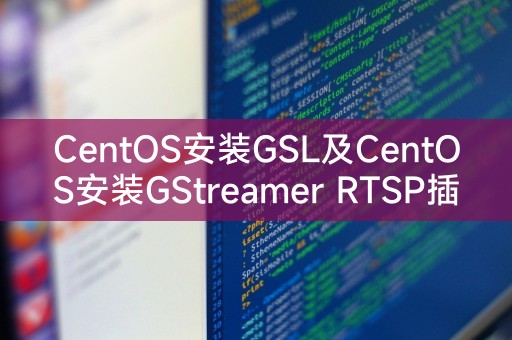Home >System Tutorial >LINUX >Install GSL on CentOS and install GStreamer RTSP plug-in on CentOS
Install GSL on CentOS and install GStreamer RTSP plug-in on CentOS
- WBOYWBOYWBOYWBOYWBOYWBOYWBOYWBOYWBOYWBOYWBOYWBOYWBforward
- 2024-02-12 12:21:181679browse
php editor Strawberry has brought you two important tutorials: installing GSL on CentOS and installing the GStreamer RTSP plug-in on CentOS. GSL is the GNU scientific library, which provides a wealth of mathematical and scientific computing functions. After installation, you can easily perform various scientific calculations in CentOS systems. The GStreamer RTSP plug-in is a plug-in used to implement the real-time streaming protocol. After installation, it can easily realize the transmission and processing of audio and video streams in the CentOS system. This tutorial will introduce the installation steps and configuration methods in detail to help readers easily complete the installation process and quickly get started using these two powerful tools.

CentOS installation GSL
GSL is a powerful C and C library that provides many mathematical and scientific calculation functions. The following are on CentOS systems Steps to install GSL:
1. Open a terminal and log in to the system with root privileges.
2. Run the following command to update the system package:
```shell
yum update
```
3 . Install the GSL package:
yum install gsl-devel
4. After waiting for the installation to complete, you can use the following command to verify whether GSL is installed successfully:
gsl-config --version
If the installation is successful, the version number of GSL will be displayed.
CentOS installs the GStreamer RTSP plug-in
GStreamer is a powerful multimedia framework that can be used for audio and video capture, processing and playback. The following is how to install the GStreamer RTSP plug-in on the CentOS system. Steps:
3. Install the GStreamer development package:
yum install gstreamer1-devel
4. Install the GStreamer plug-in library:
yum install gstreamer1-plugins -base-devel
5. Install the GStreamer RTSP plug-in:
yum install gstreamer1-rtsp-server-devel
6. After the installation is completed, you can use the following command Verify that the GStreamer RTSP plugin is installed successfully:
gst-inspect-1.0 rtsp-server
If installed successfully, information about the GStreamer RTSP plugin will be displayed.
Through this article, you have learned how to install GSL and GStreamer RTSP plug-ins on CentOS systems. These tools provide rich features and functions that can be used to develop and deploy various applications. Make sure to follow the steps to install, And verify the installation results to ensure successful installation of these libraries and plugins.
LINUX little knowledge sharing
In the Linux system, you can use the `man` command to view the man pages of various commands. To view the man pages of the `ls` command, you can use the terminal Run the following command:
```shell
man ls
```
This will display detailed information about the `ls` command, including Usage, options and examples, man pages are very useful resources in Linux systems to help you understand and use various commands and tools.
The above is the detailed content of Install GSL on CentOS and install GStreamer RTSP plug-in on CentOS. For more information, please follow other related articles on the PHP Chinese website!

